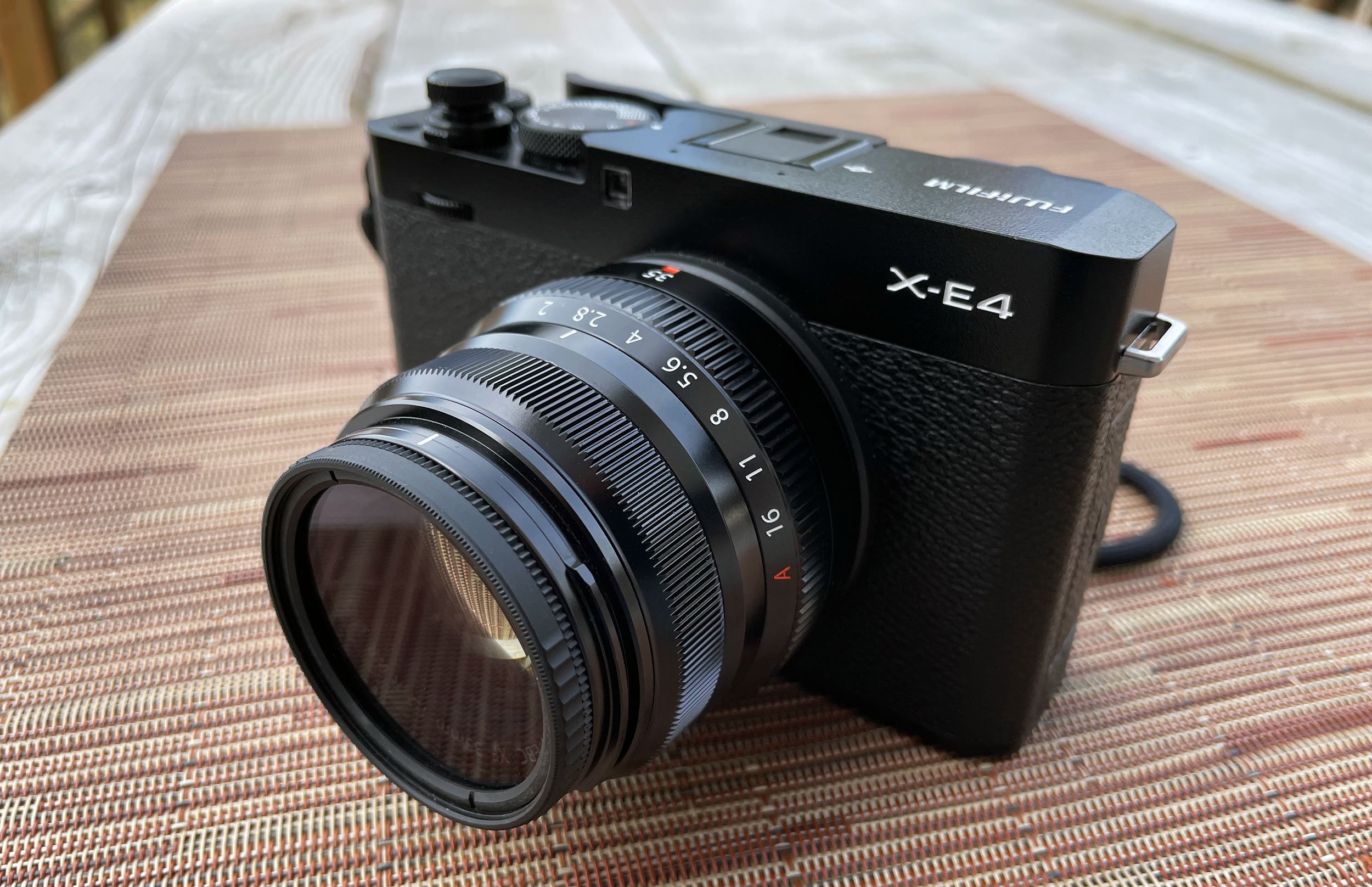How the Fujifilm X-E4 Changed My Photography
Fujifilm X-E4 with 35mm f/2 and K&F Concept 43mm Polarizing Filter
With the Fujifilm X-E4 being discontinued on numerous sites like B&H, we will soon be introduced to the inevitable replacement, whether an X-E5 or something else. Whatever it is, I’m sure it will be great. With the discontinuation, I feel it is a good time to reflect on my experience with the X-E4 and explain how using this camera has changed my photography.
I began my photography adventure 20 years ago and have travelled steadily for over 12 years. For many of those travels, I was convinced I had a mix of gear I could travel with that would give me the best opportunities for my photography. My primary camera included the Canon 5D Mark II (which, in my opinion, is still very good), and I had a variety of lenses covering everything from 17mm to 200mm. My secondary camera came later and was the Fujifilm X-E2, which was packaged with the 18-55mm. That lens was the only lens I had for the Fuji and remained so until I replaced the camera.
So why two cameras? The answer to that question will probably be agreeable to those who frequently travel. I wanted something smaller and lighter for those times when I didn’t want to haul out the heft of the 5D, but also, it’s good to have a backup.
Regarding the X-E2, oddly, I considered it inferior, and in some ways it is, but when viewing its results on my monitor, I was always impressed. Still, I could never rely on it as the primary choice for travel until I replaced the X-E2 with the X-E4.
Mexico - May 2022
Experimentation
I’ve posted before regarding the use and results of Fujifilm film simulations and discussed how much I enjoy using them. Overall, there are hundreds of film simulations, and it would be almost impossible to try each one and have an informed review of them, but I have used several. With the X-E4 holding a total of seven simulations in camera, I have mostly settled on 4-5 that I often use, although there are a few slots that I’m fine with switching out for other simulations to try.
My entire HFX Street project was shot using three film simulations: Kodak Portra 400, Ilford HP5 Plus 400, and a custom recipe from photographer Mike Chudley. I have most recently used a Kodachrome recipe for my back-to-back trips to London and New York in Feb/Mar. Overall, I appreciate how using film simulations has allowed me to focus more on capturing the photo than the post-processing.
Also, I will mention that before having the X-E4, I never considered shooting in JPEG as I could not fathom how they could be a better option than an equivalent RAW file. After experimenting with JPEGs with recipes on the X-E4, I can now say with confidence that they are a viable option with both pros and cons, but with the ability to capture both RAW and JPEG at the same time, there isn’t much reason to not capture a JPEG copy as well.
Freedom and Flexibility
Don’t get me wrong, I always realized that having a smaller and lighter setup would be better for travel, but I didn’t realize how much better it would be for me. With the smaller X-E4, I find myself having the camera with me and also physically in my hand more often than I did with the 5D Mark II. There were reasons why I was reluctant to carry the Mark II in my hand while exploring, including the weight, size, and perceived purpose. The Canon 5D Mark II gives the impression of a “professional” camera. If I was taking photographs of landmarks, landscapes, or other things that didn’t include a primary human subject, I was comfortable with the camera as it made sense in those situations. Still, when I started incorporating more street photography into my travels, I realized how visible I was. A large DSLR looks purposeful, whereas the X-E4 looks touristy in comparison, especially with a small lens attached, which makes all the difference in comfort, which is imperative to success in street photography.
New York - June 2022
The Street Photography Community
This is somewhat of an indirect result of the X-E4, but around the time I was considering the camera, I was doing research into my future purchase with searches that included, for example, “xe4 street photography”, “xe4 for travel”, “fujifilm street photographers,” “best camera for street photography,” and more. Not only did that provide the obvious technical specs, but it also allowed me to discover several photographers, some of whom have amazing websites, a great Instagram feed, or a wealth of camera and street photography knowledge on their YouTube channel.
Studying those who inspire is a way to discover how, what, and why people are photographing and being inspired by others, even if it’s not necessarily your style. It is a resource for inspiration that drives you to create your own.
Summary
The Fujifilm X-E4 has become my primary travel and street photography camera. The X-E4/35mm combination makes it an almost perfect travel companion, being small and discreet. The RAW + JPEG option allows me to experiment with different looks and styles while having the addition of a RAW file if needed. Purchasing the X-E4 has given me more opportunities to shoot, and more opportunities equal better results. The look and feel of my photos have evolved thanks to the Fujifilm X-E4, and the opportunity for great photos has increased as I am more comfortable with the smaller setup in public situations.


